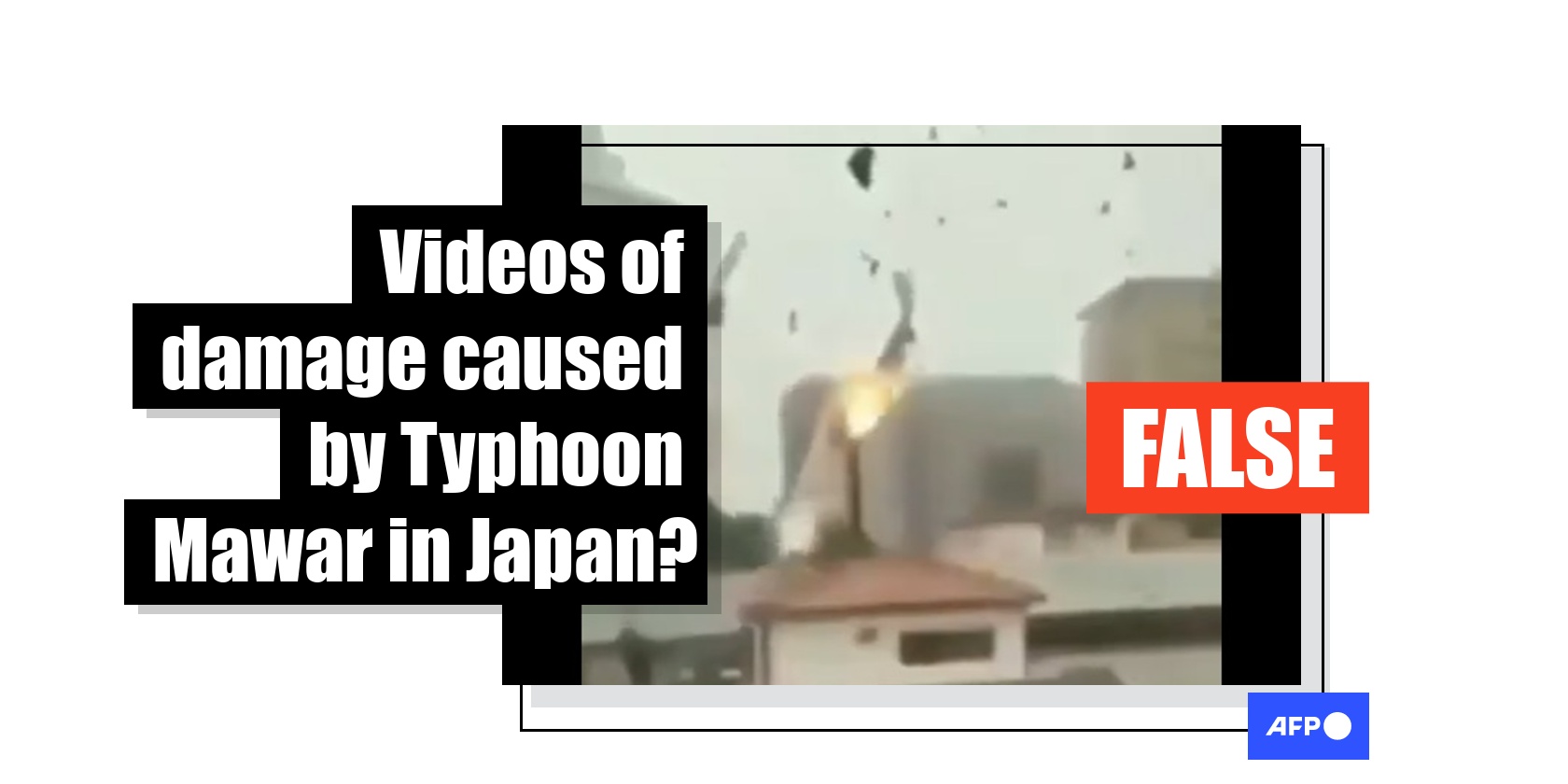
Old videos show typhoons that struck in 2018, not Typhoon Mawar's impact on Japan in 2023
- This article is more than two years old.
- Published on June 16, 2023 at 08:22
- 7 min read
- By SHIM Kyu-Seok, AFP South Korea
"Japanese evacuated in droves due to Typhoon Mawar," reads part of the Korean-language caption to a video shared on Facebook here on June 3, 2023.
"On Friday [June 2], Japan announced the evacuation of 140,000 people. There were hundreds of flights cancelled and trains between Tokyo and Nagoya were suspended."
The post includes a one-minute, 34-second compilation of nine clips showing the damage caused by storms in urban areas.
The video circulated as Mawar passed to the east of Japan, with heavy rain across parts of the country leaving one person dead, two people missing and dozens more injured.
Hundreds of thousands of residents were urged to evacuate as several rivers overflowed, bullet trains between Tokyo and Nagoya were suspended, and hundreds of flights were cancelled.
Scientists say climate change is intensifying the risk of heavy rain in Japan and elsewhere, because a warmer atmosphere holds more water.
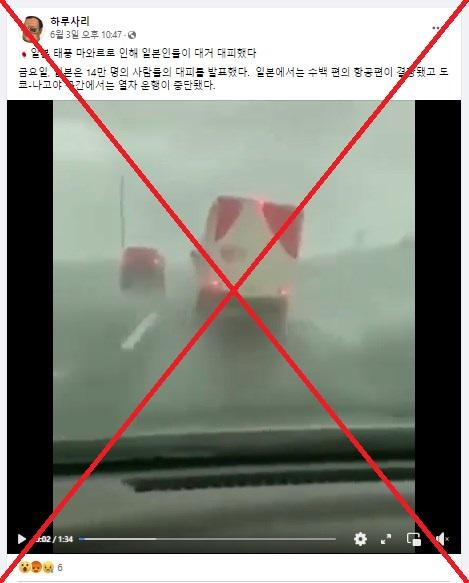
The same video was shared alongside identical claims on Facebook here and here, as well as on Telegram here.
But the clips do not show Typhoon Mawar's impact on Japan in 2023.
Eight of the nine clips were filmed when Typhoon Jebi hit Japan in September 2018, while one was captured in Hong Kong as Typhoon Mangkhut struck the city in September 2018.
Typhoon Jebi footage
A reverse image search on Yandex led to the same compilation that was posted on the Russian video-sharing website VK.com on October 13, 2019, years before Typhoon Mawar reached Japan.
A subsequent keyword search on Google found the first four clips in the compilation had previously been shared with the false claim they showed the impact of Hurricane Florence in the US state of North Carolina in September 2018. AFP debunked the false claim, finding the clips were in fact posted as Typhoon Jebi made landfall in Japan that month.
The first clip in the video shows a van tipping over and sliding around as it is buffeted by wind gusts.
AFP found the clip had first been tweeted on September 4, 2018 by a user who said it was filmed in Osaka, Japan (archived link).

The second clip, shown between the five and 10-second mark, shows wreckage flying through the air and hitting what appears to be a power line, causing a small explosion.
The footage was first shared in a tweet from September 6, 2018, and a search on Google Street View shows the clip was filmed in an area around Koshien train station between Kobe and Osaka (archived links here and here).
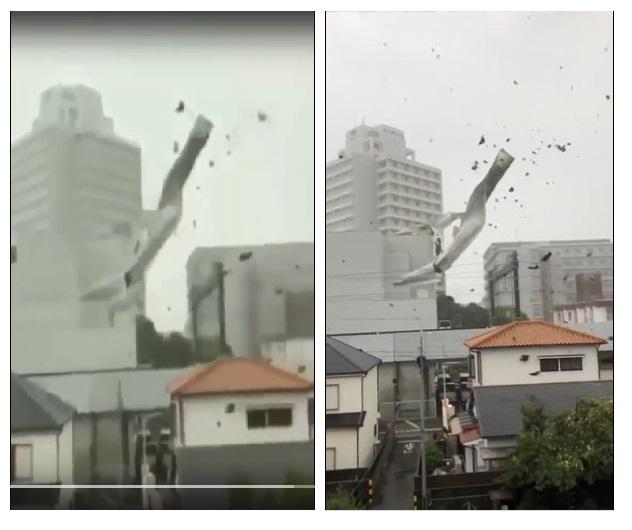
The third clip, from the video's 10-second mark, shows an object crashing to the floor inside an open space within a building.
This clip was cited in reports about Typhoon Jebi in September 2018, including from the Associated Press, which explained it showed debris from the typhoon hitting the glass ceiling of the central train station in Kyoto and causing glass to fall into the atrium below (archived link).
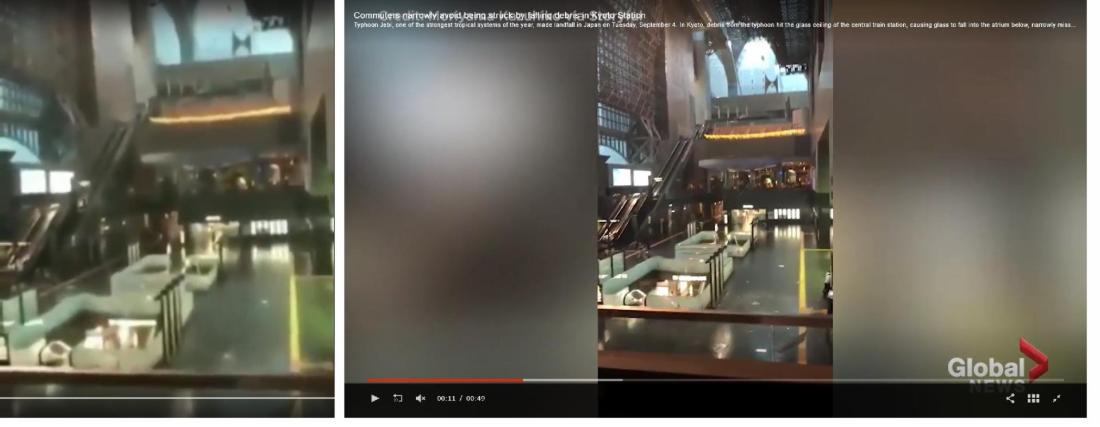
The fourth clip, which shows a car nearly flipping over at the compilation's 20-second mark, was traced to a Japanese-language tweet from September 4, 2018, which said it happened during a typhoon (archived link).
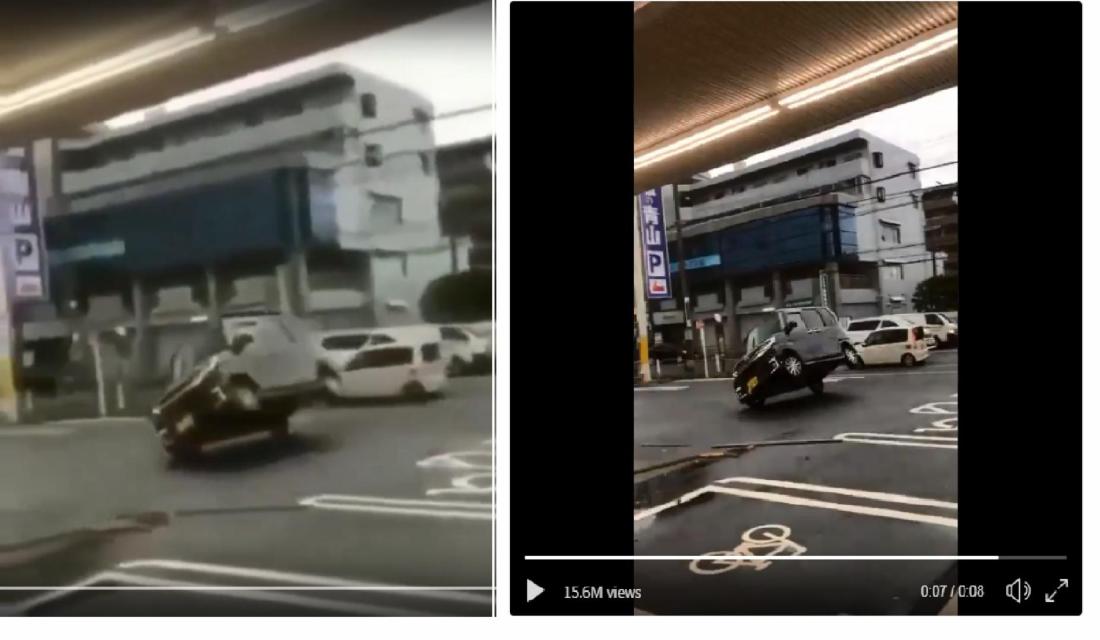
AFP separately tracked down the other five clips in the compilation, finding they were also unrelated to Typhoon Mawar.
The fifth clip, at the compilation's 30-second mark, shows vehicles in a parking lot pushed over by fierce winds, and Japanese voices can be heard in the background.
A reverse image search on Google found the same clip was shared in a Japanese-language tweet on September 4, 2018 by a user who also posted various photos of the destruction in his neighbourhood caused by the storm (archived link).
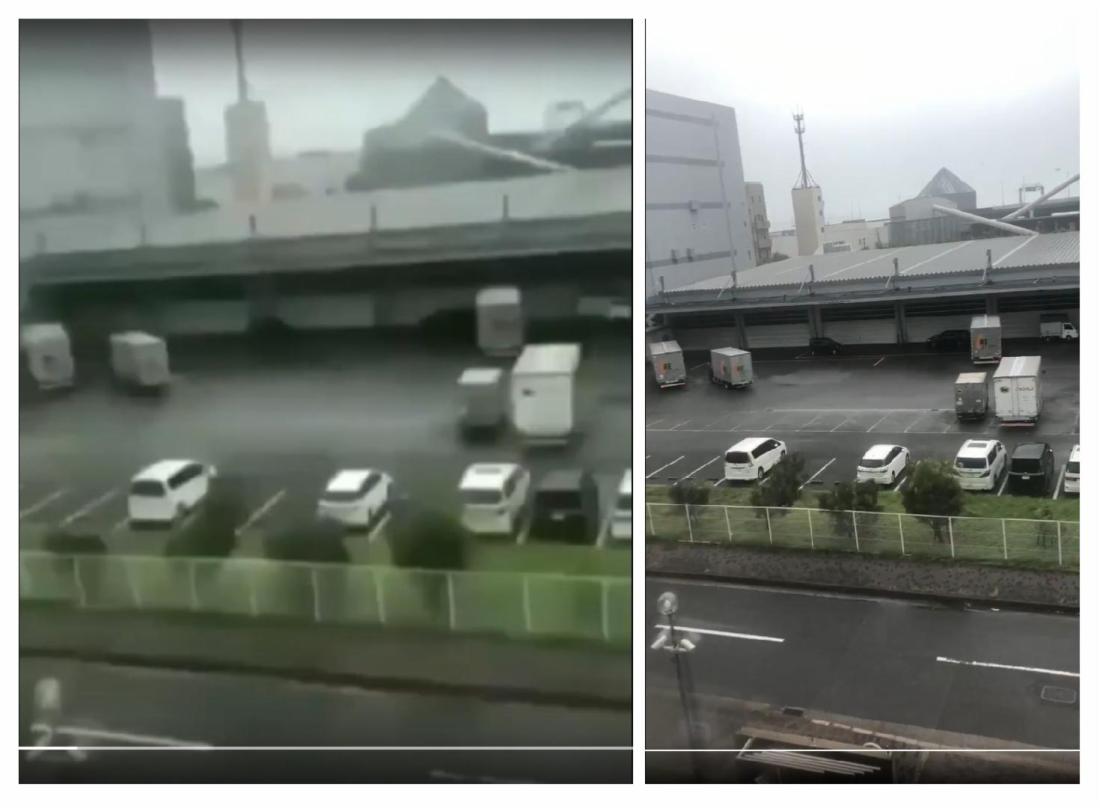
The sixth clip, at the 37-second mark, shows debris hurtling towards the Japanese-speaking person capturing the footage, forcing them to flee.
A reverse image search on Yandex found a screenshot from a corresponding clip was included in a Japanese blog post from September 5, 2018, that shared multiple different images of damage caused by Typhoon Jebi, alongside a description that this clip was filmed in Japan's Hyogo Prefecture (archived link).
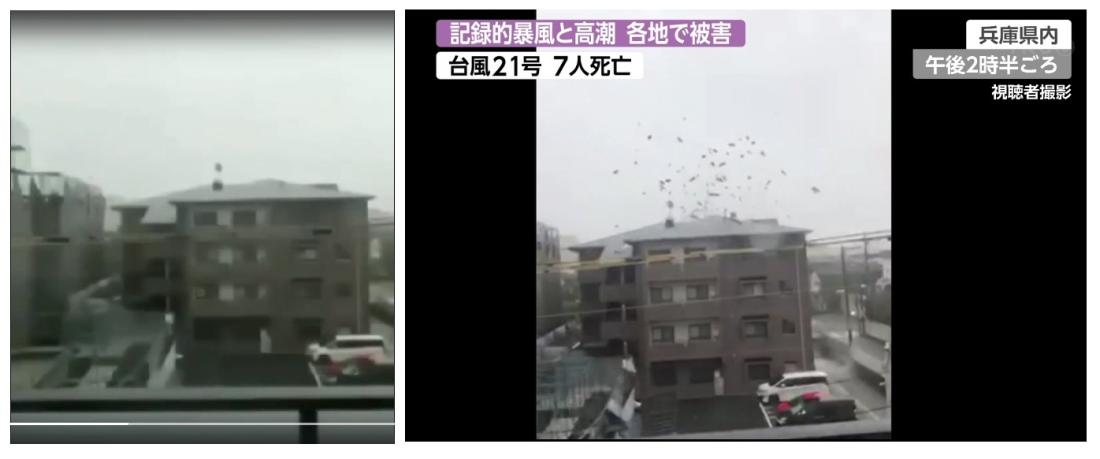
The seventh clip, at the 44-second mark, shows scaffolding falling from the side of a building as a result of a strong gust.
A keyword search on Google found the same building was filmed from a different angle in a video posted by Singaporean broadcaster CNA on September 5, 2018, explaining the video was captured during Typhoon Jebi (archived link).
Below is a screenshot comparison of the clip shared alongside the misleading claim (left) and the corresponding video shot from a different angle posted by CNA (right), with the matching features highlighted by AFP:
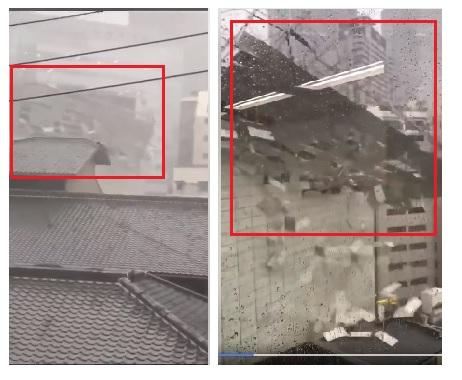
Separate searches on Google found the building, in Osaka's Nishi ward, was photographed with its collapsed scaffolding in reports from CNN and Japan's Sankei News from September 2018 (archived links here, here and here).
The eighth clip, from the compilation's 54-second mark, also shows debris being blown towards power lines and causing a small explosion.
A Google reverse image search found the clip was published in a report by the UK-based Daily Express newspaper from September 5, 2018, on the destruction caused by Typhoon Jebi in Japan (archived link).

Clips related to other storms
The final piece of footage used at the compilation's one-minute mark shows strong winds gusting through a street.
AFP previously geolocated the street seen in the clip while debunking the false claim it showed Typhoon Hagibis hitting Japan in October 2019.
This video was in fact filmed in Hong Kong's Tsim Sha Tsui district and has circulated since September 2018, when the city was hit by Typhoon Mangkhut.
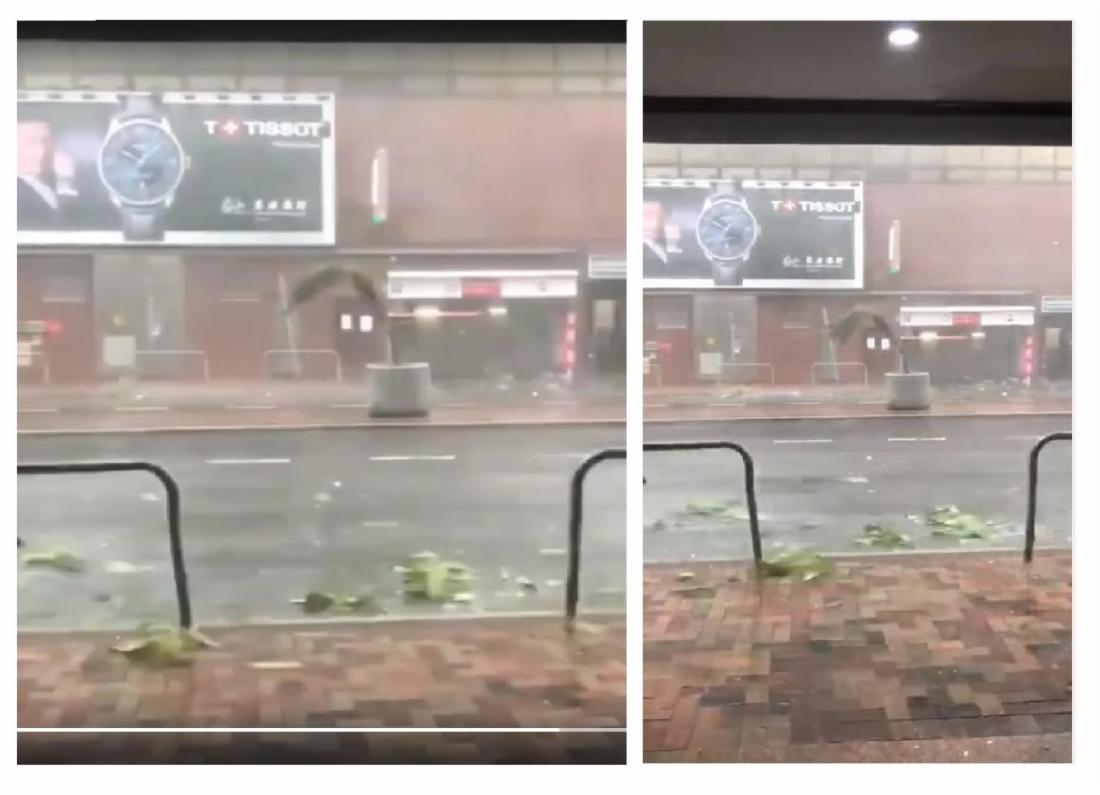
The last seconds of the false video show a computerised weather forecast tracking a storm that makes landfall on the Japanese archipelago near Tokyo.
A Google reverse image search found the clip corresponds to a screenshot of a National Weather Service forecast of Typhoon Hagibis, published in a Daily Express report from October 11, 2019 (archived link).
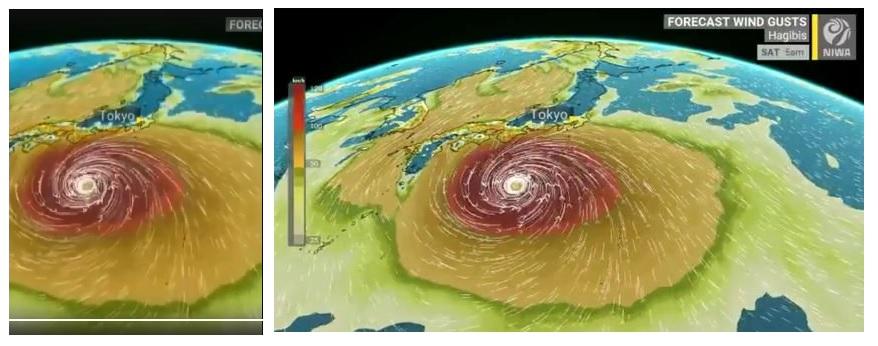
Typhoon Hagibis slammed into Japan in October 2019, killing three dozen people and leaving behind a trail of destruction.
Typhoon Mawar never made landfall on the Japanese mainland, veering to the east on June 3 as its intensity waned, according to satellite tracking of the storm (archived link).
Copyright © AFP 2017-2025. Any commercial use of this content requires a subscription. Click here to find out more.
Is there content that you would like AFP to fact-check? Get in touch.
Contact us
